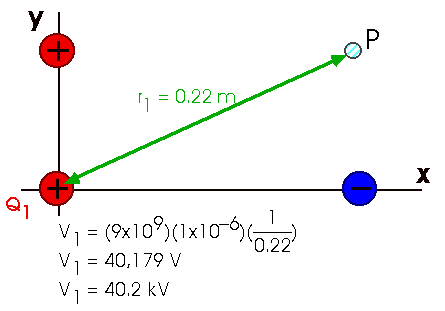

Multiple Charges Remember that potential difference (the voltage) is basically a potential energy divided by a charge q. Therefore, everything we did for the electric PE of charge q due to the presence of several other charges Q is immediately applicable here and now.
Since PE is a scalar, V is also a scalar.
With these charges already in place, what is the electric potential at some point -- some region of space -- we might label P?
Voltage, like PE, is a scalar, so we need only add the potentials (or potential differences or voltages) due to each of these charges. That is,

That's all there is to it!
However, let's continue with a numerical example.
What is the electric potential -- the voltage -- at point P? What is the electric potential at point P because the charges Q's are there?
Find the potential at point P for each charge Q; then add up the sum (ordinary, scalar addition).

Remember, voltage, like PE, is a scalar, so we need only add the potentials (or potential differences or voltages) due to each of these charges in an ordinary, common, scalar equation.
|
|
|
||
|
|
|||